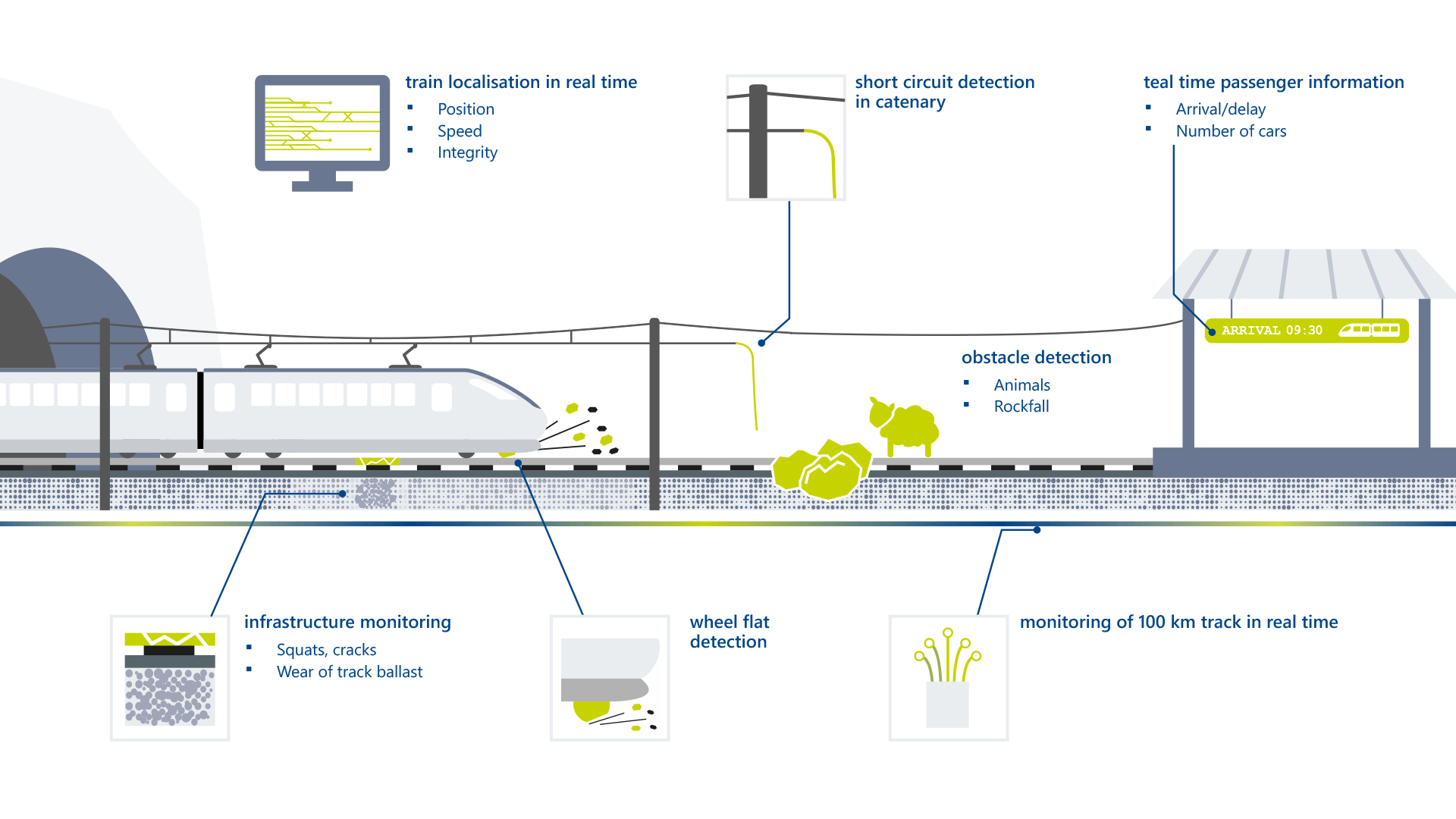Dr. Tobias Hofbaur
Railway technology
Innovative fiber optic technology can visualize sound waves. Distributed Acoustic Sensing (DAS) uses fiber optic cables and turns them into continuous acoustic sensors by connecting interrogator units.

DAS offers potential for many railway applications. This system’s advantages are many. It can continuously monitor tracks over great distances in real time. DAS installs easily and requires little maintenance. And a single system can serve several applications in parallel. DAS-based solutions maximize operational efficiency over the long haul, affording operators opportunities to reduce the human workload and conserve financial resources.

Connecting interrogator units transforms fiber optic cables into acoustic sensors. An interrogator emits coherent light pulses that micro-pollutants in the fiber optic cable backscatter to the interrogator. Small plastic displacements along the fiber optic cable induced by acoustic waves change the backscatter pattern. The interrogator observes this pattern to recognize the signatures of acoustic events in near real time and pinpoint their positions along the cable in a quasi-continuous mode.
Distributed Acoustic Sensing can serve many purposes – to continuously track trains in real time, to monitor the condition of infrastructure and rolling stock, and to detect obstacles on the track.
Innovative use cases:

We are bringing the future of railways into the here and now. One example is Distributed Acoustic Sensing, where a railway line’s installed fiber optic cables are equipped to function as acoustic sensors. This way, we can detect wheel damage and obstacles, pinpoint the train’s position, and determine if it is complete, virtually in real time. Innovative technologies like this are the core of our expertise.
Dr. Tobias Hofbaur, Program Manager
Our innovative approaches are driving advances in Distributed Acoustic Sensing. We have been developing algorithms for a wide range of DAS use cases for more than five years now. To this end, we draw on state-of-the-art signal processing methods and apply our knowledge of systems and domain expertise. Big data processing and data analytics tools serve us well on our journey from the prototype to the final system. As independent developers, we are not limited to any specific interrogator manufacturer or hardware vendor.
Some of the many real-world examples of Distributed Acoustic Sensing in the railway sector include projects to furnish real-time passenger information and localize voltage surges in overhead lines. We aim to continue on this path of innovation, developing applications that are destined to become standard railway solutions.